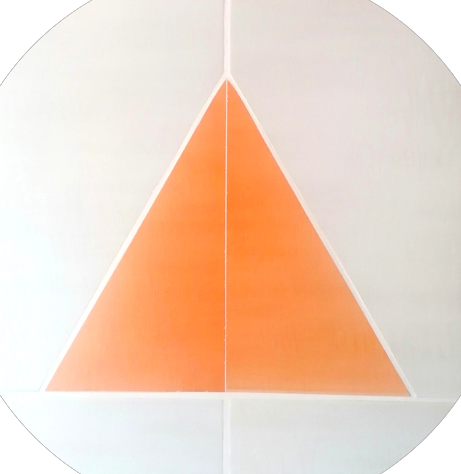The division into three parts – can be applied to all yoga exercises
The application of the threefold structure in the kneeling position
In the simple kneeling position, the body can be divided into three zones. The hips are contracted, they should be calm and centred, the middle of the thoracic spine is dynamized, it is the active center of movement. The shoulders, neck and arms should be relaxed to continue the dynamic from the center upwards.
The development and maintenance of this structure is a content of consciousness that Heinz Grill assigns to the 3rd center or cakra.
The third center is located in the middle of the spine. It is the center of tension and dynamics. This area forms the middle of the spine, which ideally mediates between the upper, lighter area of the spine and the lower, more compact area of the spine and acts as the middle link.
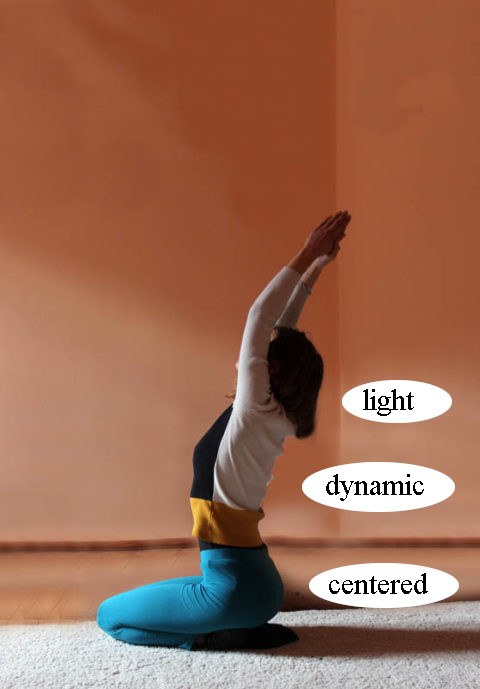
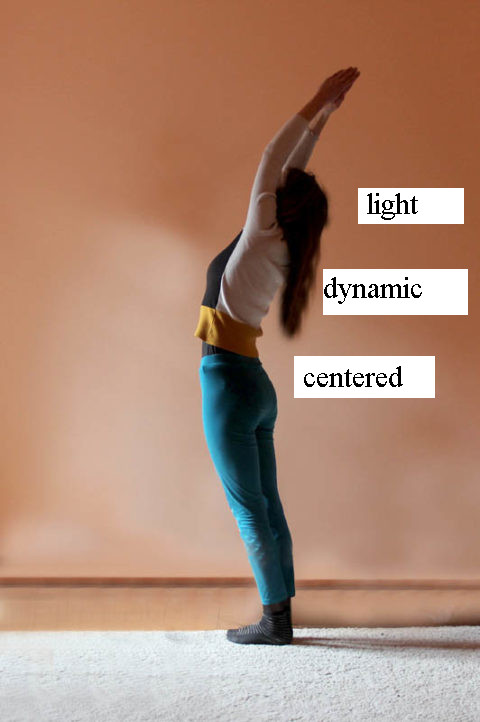
The threefold structure in the standing half moon
The standing crescent can also be created very well into these three zones. The middle of the spine forms the active, dynamic center of movement, from where the movement glides upwards into the arms. The hips are centered and the legs are closed and stable.
The three-part structure creates access to a conscious movement approach from the center of the spine.
The spine can then support itself and find support in its center, combining stability and dynamism.
The three-part structure in the horizontal triangle
In the reclining triangle, anantasana, the body lies sideways on the floor in a long longitudinal line and forms a triangle with one arm and leg pointing upwards. In the reclining triangle, the body can be consciously divided and shaped into three different sections: The middle of the spine, the so-called solar plexus, forms the active center of the dynamic. The upper area of the arms, neck and head fits into the line in a relaxed yet clearly aligned manner, while the lower hip and leg area flows dynamically backwards. The legs are active and flow backwards, giving the exercise support so that you don’t tip over in the sacrum region.
Diese Gliederung in drei Bereiche benennt Heinz Grill mit dem Begriff der Dreigliederung. Man erlebt, wie diese drei Bereiche in der Übung bewusst zusammenwirken. Das liegende Dreieck ist eine Übung, in der man diese Gliederung sehr gut zum Ausdruck bringen kann.
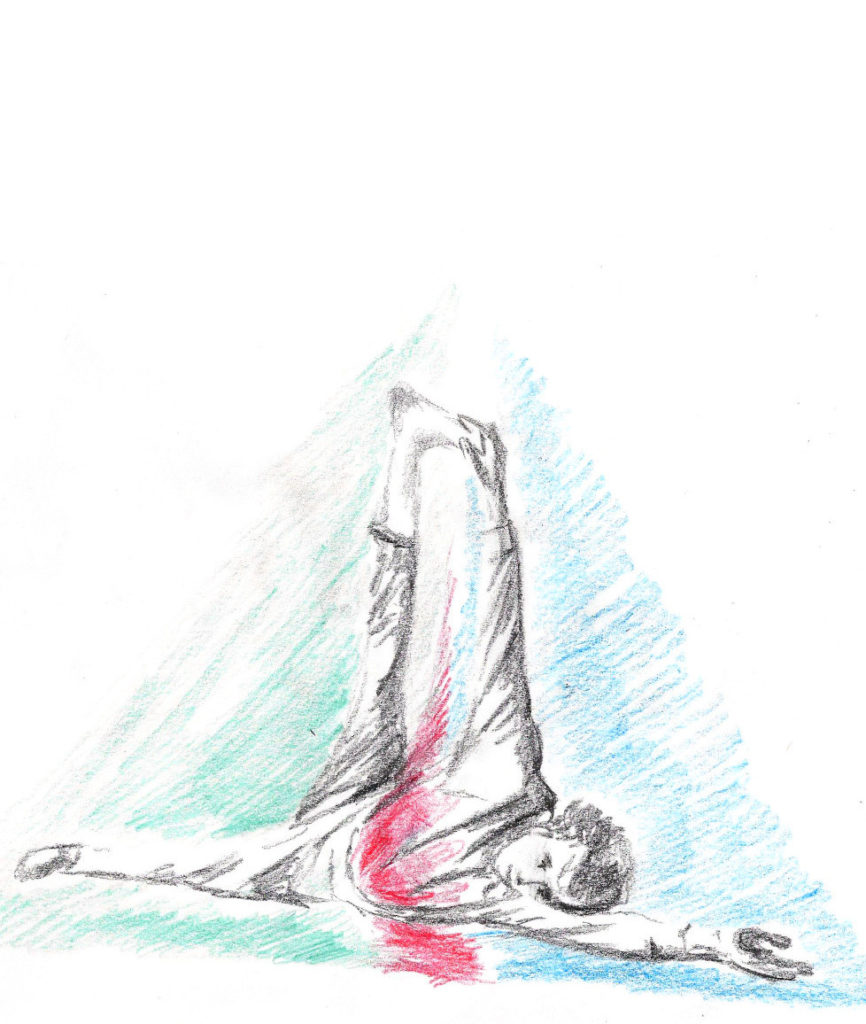
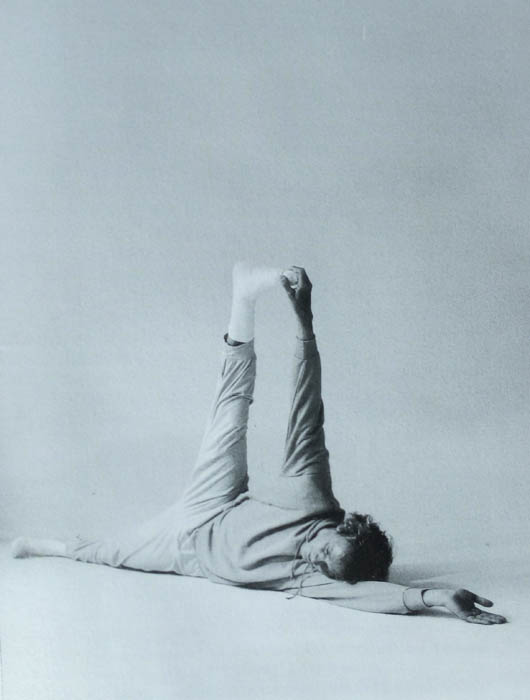
“Dynamism and relaxation therefore meet in the middle of the body and promote the feeling of a connection between above and below.”
(Heinz Grill, the lying triangle, The Souldimension of yoga p.185)
The three-part structure in the head-knee position
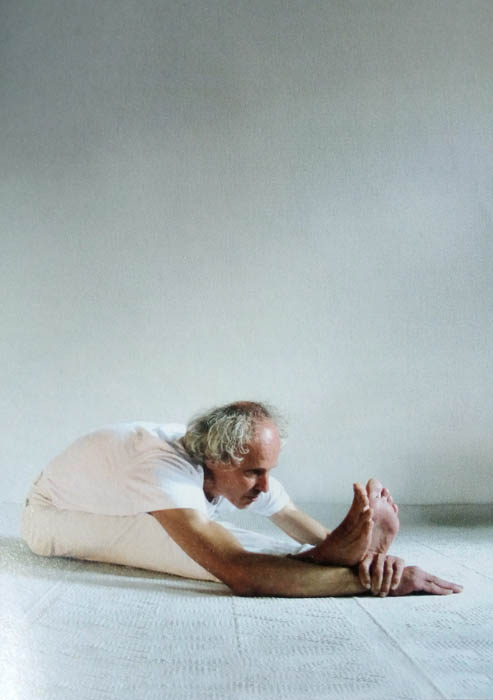
The threefold structure can be applied very well in the head-knee position. The spine as the central, dynamic axis plays a central role in the head-knee position. You can center yourself particularly well in the area of the central spine. The better you find a center there, the better you can bring an outflowing dynamic into the whole yoga exercise.
You maintain relaxation in the arms, head and neck, build up tension from the middle of the spine and center yourself with good support in the hips. You not only learn to tense the whole body, but also to consciously structure and center yourself in the spine. You experience a connection between the ability to center yourself very well in the middle of the spine and to dynamize yourself with the help of a created center. Dynamics and center work together here in a highly active and lively way.
“Slide forward dynamically from the middle of your back and keep your shoulders as relaxed as possible. Hold this tension for some time in preparation until you can finally grasp the feet, ankles or shins after a wide stretch and intensification. When performing the exercise, it is important to achieve the greatest possible stretch and to extend the limits of what is possible. Pushing the limits is an important part of the exercise.”
(Heinz Grill, A new Yogawill)
When performing and correcting pascimottanasna – the head-kneeling pose – Heinz Grill focuses on the idea of the three parts. The practitioner not only practices with the intention of good stretching, but also mentally builds up this idea until a good feeling for the three parts becomes visible in the execution. In this way, the practitioner not only experiences a harmonious movement, but also enriches their emotional life. The risk of injury is largely limited during this mental activity. The back is even strengthened in a physiological way and stretched beyond its own limits.
The threefold structure in the triangle
The triangle trikonasana is one of the best exercises for experiencing the body in a structured way, or rather for experiencing the quality of movement in a differentiated way. Lightness, dynamism and stability are structured and at the same time form a harmonious unit. The result of this articulation is a regenerative sensation of expansiveness. In this video you will find both a simple illustration of the movement and the very helpful correction of the exercise.
